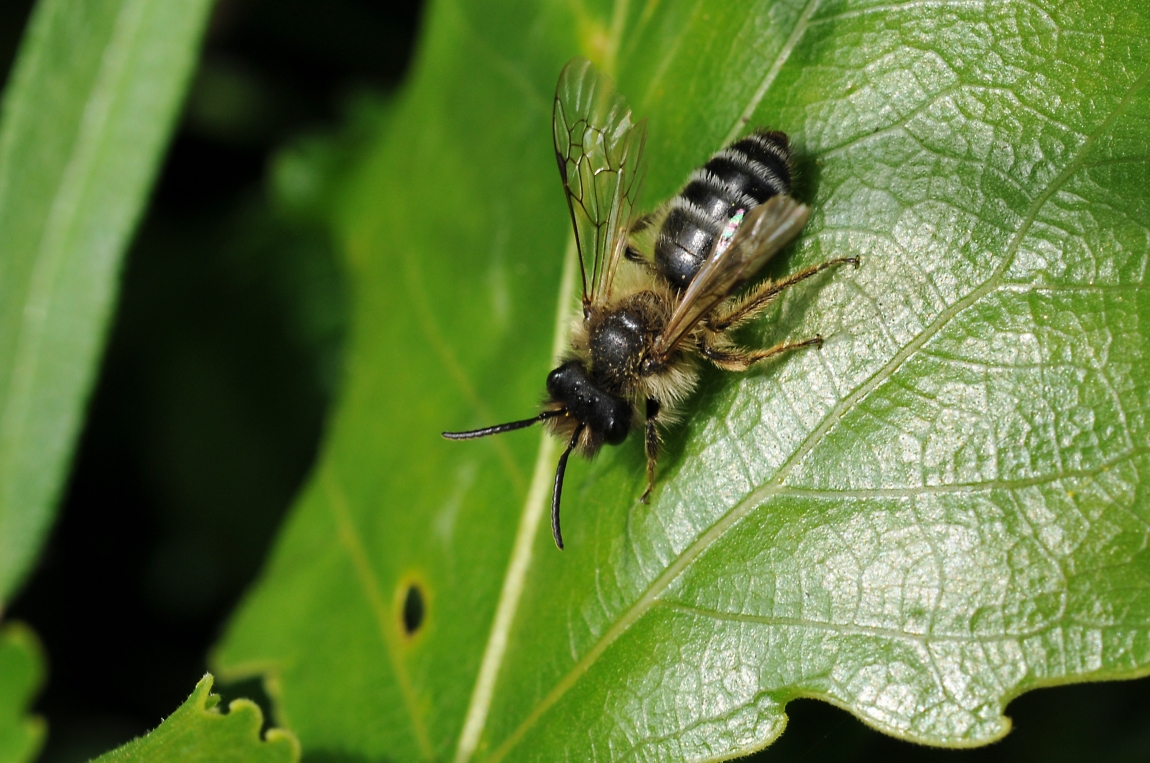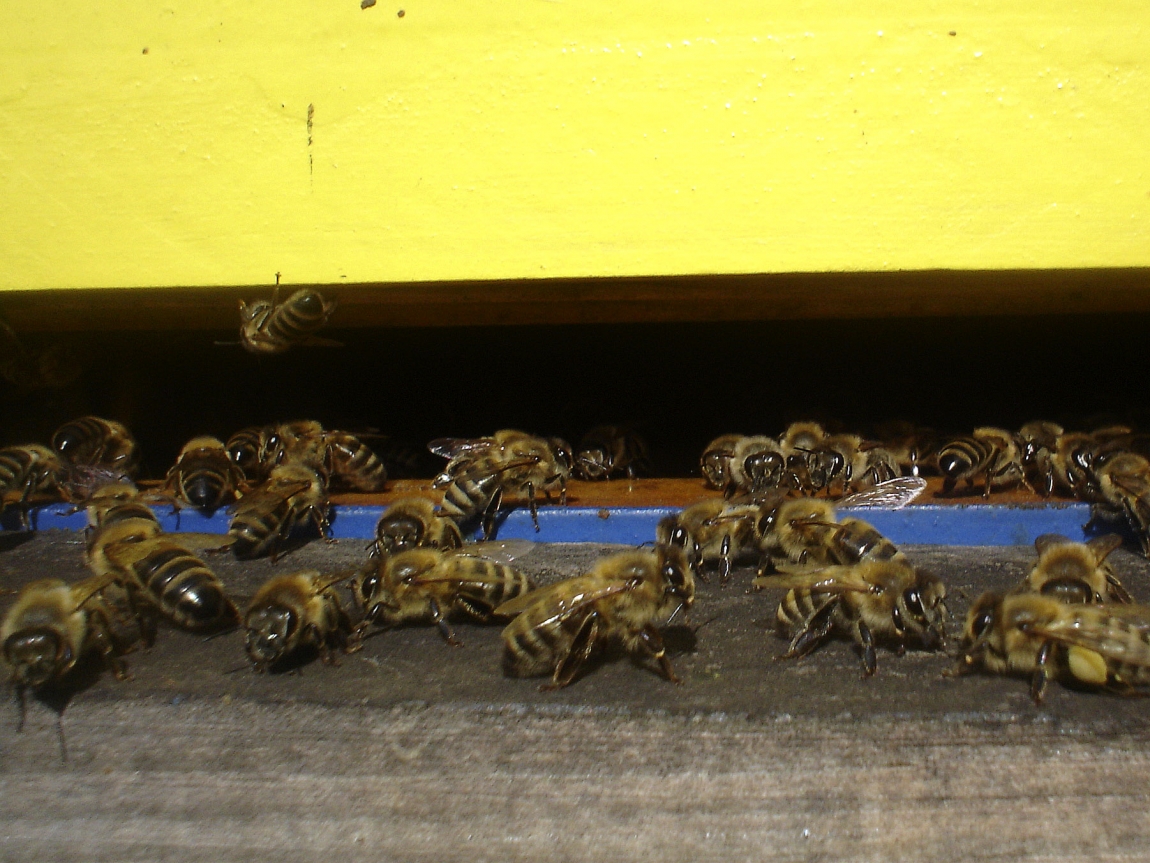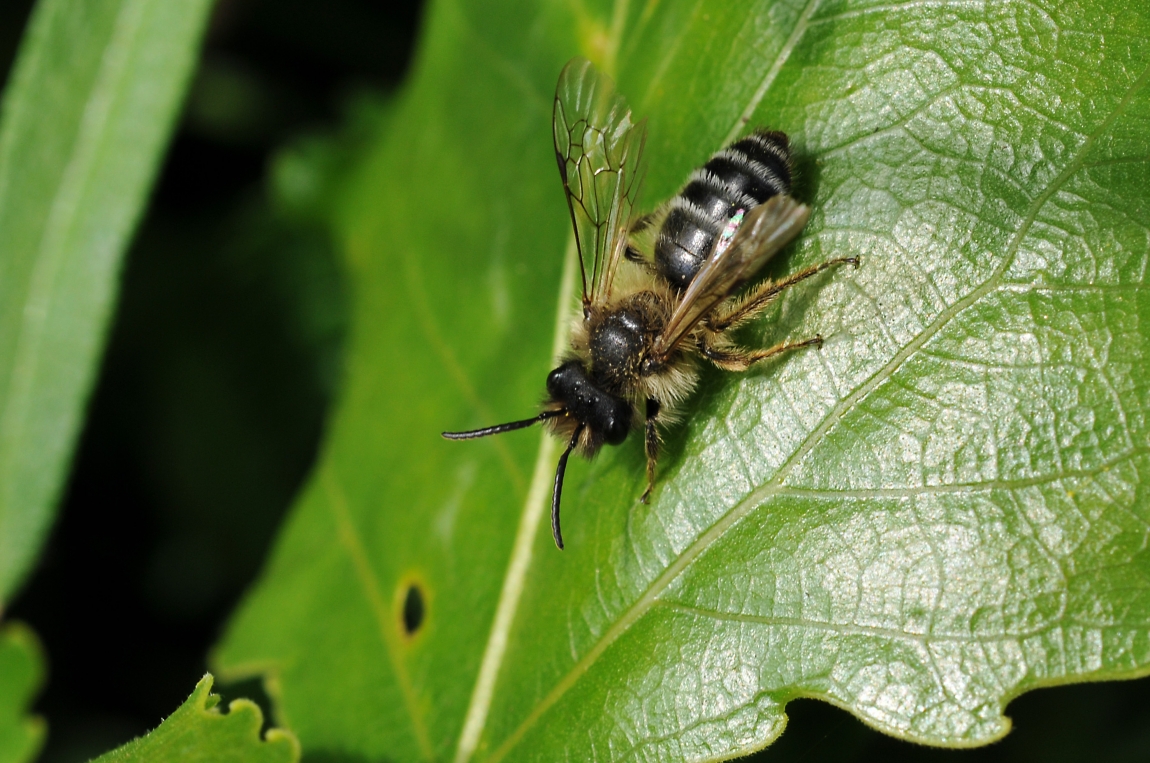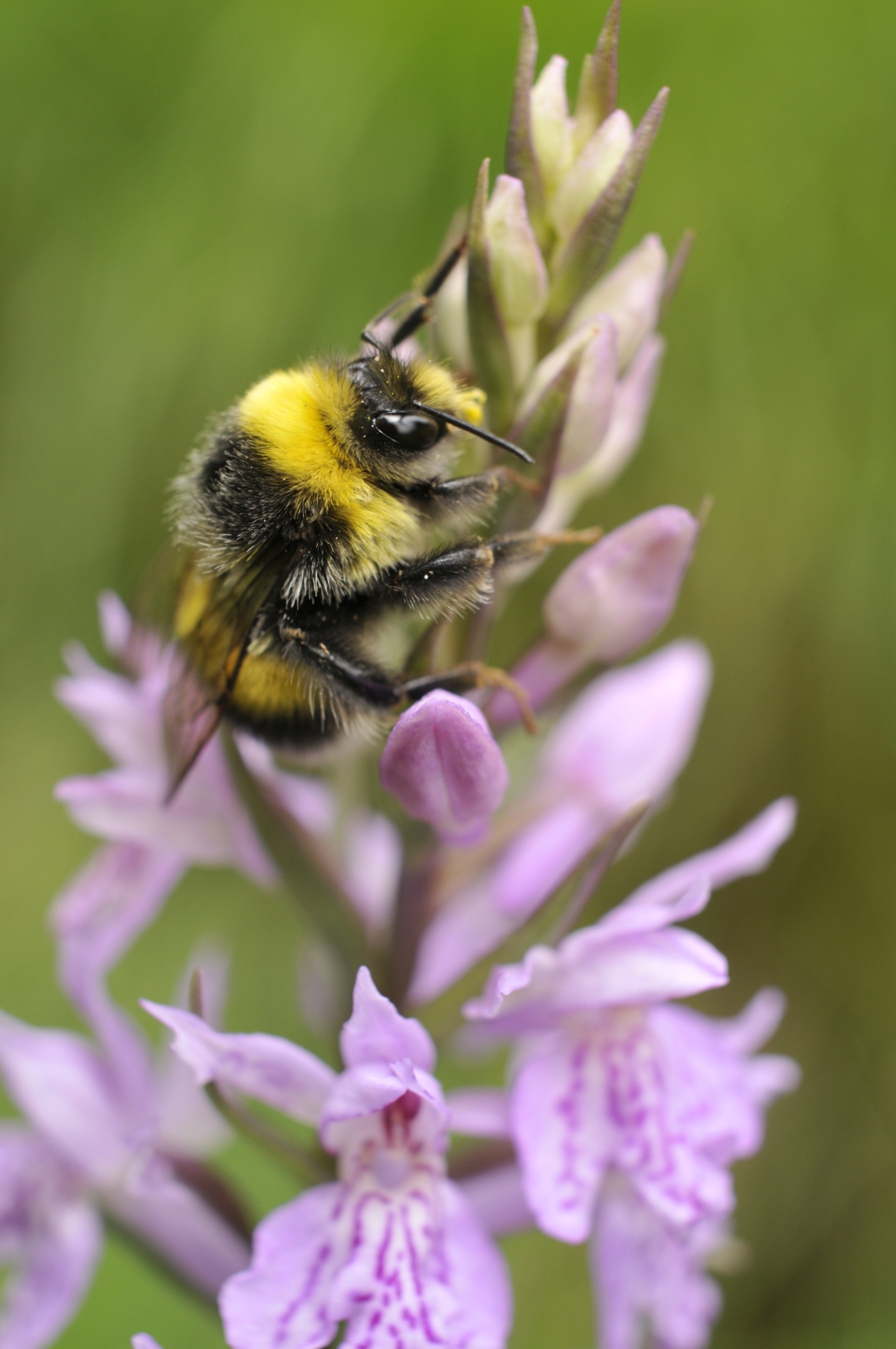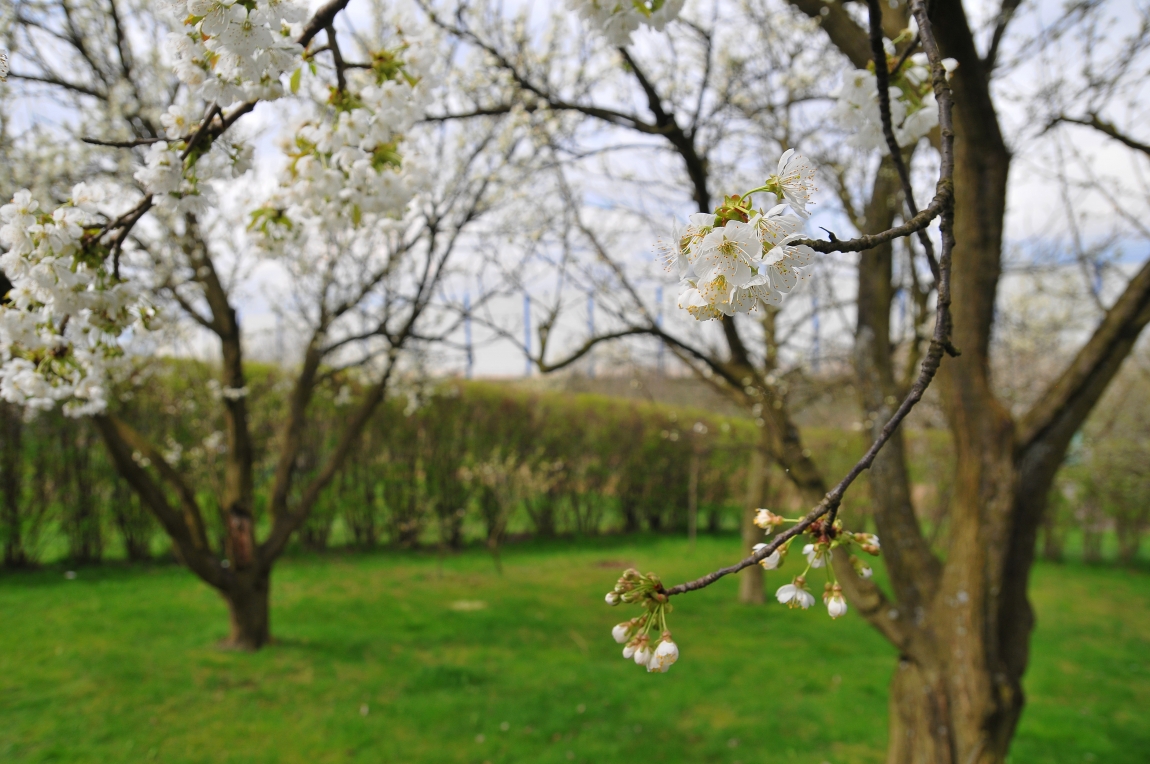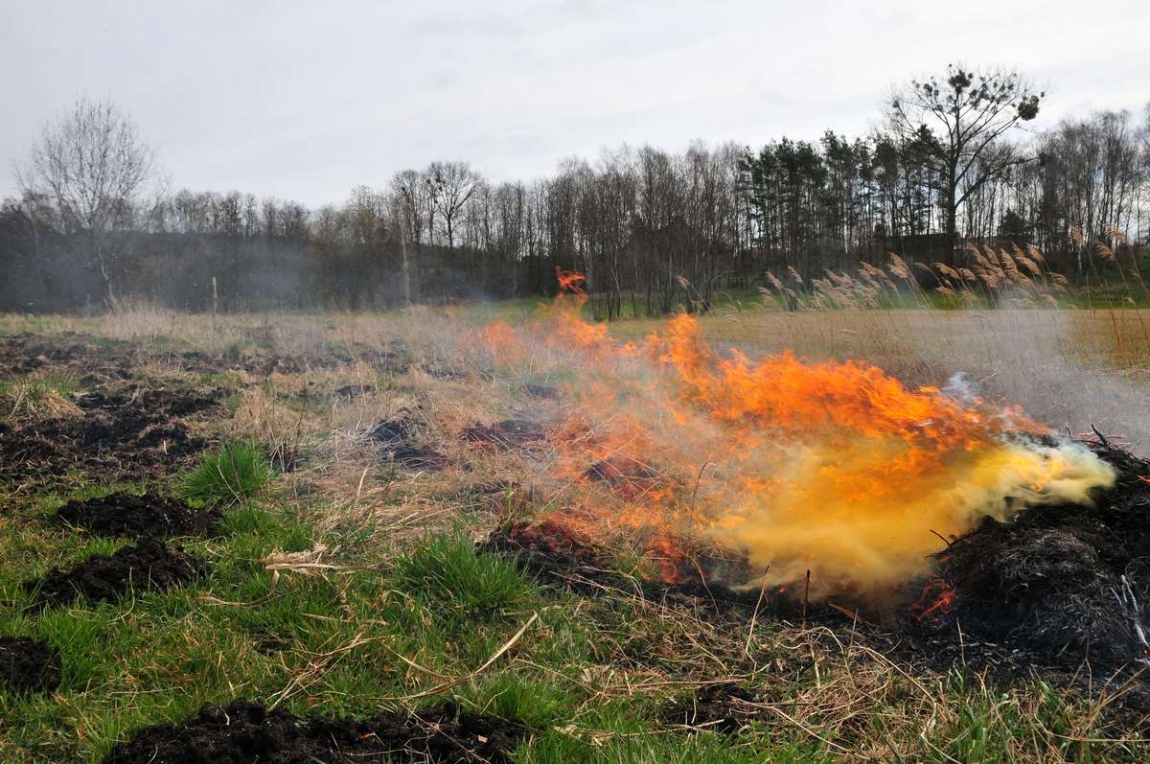Individuals of opposite sexes meet only during the mating flights, followed by single females live separately, create hive or several hives that are divided into breeding compartments and supply with food (a mixture of pollen and nectar). In each hatching chamber they lay one egg, and then they close it, depending on the specific species with a different material, for example megachile uses bitten out oval pieces of leaves. After creating a few or several chambers for breeding and laying eggs in them, the females are killed, living average of 4-6 weeks. The offspring of these breeding chambers bite out in the next year and the cycle is repeated [3, 7]. Within the superfamily Apoidea (bees) there are 6 families, which makes it a very diverse group. Bees that belong to different species appear in the environment at various times during the utility season, so from several to several dozen species can be observed. Solitary bees are very efficient pollinators, for example Osmia rufa flies by 150 different plant species, which it pollinates, and is particularly desirable in orchards. On the other hand Melitta leporina and Megachile rotundata are the best pollinators of alfalfa.
At least 1/3 of the food we owe directly to the work of bees as pollinators, and more than 75% of all crops grown in Europe requires the presence of pollinators. If there will be absence of bees, it will be necessary to develop other ways of pollination, and it can be very costly [4]. This could take away from our tables: fruits (apples, pears, strawberries, blackberries, blueberries, cranberries, gooseberries) and vegetables (carrots, asparagus, brussels sprouts, broccoli, cauliflower, celery, cucumbers). There would be a lack of crops (alfalfa, buckwheat, turnip) and herbs and spices (allspice, almonds, cinnamon, garlic, nutmeg). Without pollinators there wouldn’t be loved chocolate, in which the main ingredient is cacao beans [6]. In recent years, the situation of the honey bee (Apis mellifera) is becoming worse (many colonies die from unknown causes). Unfortunately, it also happens with other living wild pollinators - the populations of individual species are decreasing dramatically. Even so numerous until recently bumblebees have problems of survival in a rapidly changing (to their detriment) environment.
Existence of bees living in the wild is threatened by many environmental factors:
• lack of natural and semi-natural habitats,
• increasing exposure to the effects of chemical pesticides
• environment pollution,
• use of pesticides in agriculture, which has its advantages because it makes it easy to crop production, but also has a huge drawback - contributes to the extinction of natural pollinators.
Intensive agriculture (and large-scale one) is one of the greatest threats to the community of pollinators around the world. The hope for pollinators is organic farming, based on biodiversity and free from chemicals.
Pollinator populations also negatively affected by climate change:
• increase in average temperatures,
• change the schema of precipitation
• emerging, as a result of climate change, unpredictable and violent weather phenomena [4].
Climate change causes increasingly disorder called "synchronization in time" of occurrences of both food plants and solitary bees. This means that when there environmental bees appear, there is an end of flowering of the food plants.
How will the world look like without pollinators can be seen in China, the Hanyuan county (Sichuan province), where since the mid 80s of the twentieth century, there are no honey bees. The region is famous for growing pears, and the absence of bees cause flowers on the trees be pollinated by farmers themselves (climbing the tree) with brushes made out of chicken feathers. Such pollination is the most labor-intensive part of the production of these fruits. This is what insects would do in an hour and person has to do all day, risking a fall from a height of 3-4 m [5].
And how the average "Smith" can help these invaluable (and often underestimated) insects? Anyone can contribute to the expansion of the population of these insects, creating hive packages in his backyard or cottage orchard. Solitary bees are very willing to settle in offered packages, in addition contributing to the growth of crops fruit and vegetables [3].
To save our little friends large cities can also contribute. For example, in Wroclaw, in two parks: Grabiszyński and the Eastern and allotments on Little Muchobor, three "hotels for bees" were created. A similar action across the country was initiated by Greenpeace – it undertook the construction of the 100 such "hotels" in provincial cities. Bees that live in "hotels" do not form families, because they are solitary bees, and are not aggressive, so there is no fear that they will be stinging (although they have the capability). "Hotels" are made exclusively from natural materials, wood, clay, straw, reeds or bamboo poles [8]. Great initiative several years ago was taken by a zoo in Opole, which can boast about such a "small hotel" located in the middle of the herbarium, which is a garden of herbs and plants and crops for bees. Visitors to the garden can see that the bees (including honeybee) are not aggressive, if they are not disturbed. These types of initiatives are very cheap to implement, often even cost-free and you can gain useful and totally harmless neighbors, thereby helping to improve biodiversity in the environment.


